

The Brilliance of Beppu’s Bamboo Craftwork
|
Beppu, an eastern city in Oita Prefecture, is known throughout the country for its hot springs. The city boasts the largest hot spring water output in Japan, stretched across 2,849 springs that fill with nine different types of hot spring water. Its close relationship with hot springs is evident in its local jigokumushi (地獄蒸し, lit. “hell-steaming”) cuisine, and abundance of resorts and steam baths.
However this city, constantly shrouded in plumes of hot steam, is also known for traditional bamboo crafts. Beppu takezaiku (別府竹細工), as it is known in Japanese, refers to handmade bamboo craft that is produced in Beppu. There is a long history of bamboo crafts in this region, with records in the Chronicles of Japan (a document that dates back to the 8th century) stating that tea bowl baskets made of bamboo were made for the then-Emperor Keikou when he travelled through Beppu. Throughout the centuries, Beppu has cultivated a reputation as a tourist hotspot thanks to its hot springs. Unfortunately, it is impossible for visitors to take home any part of the hot springs, but visitors could instead bring back intricately-made bamboo craft as souvenirs. Oftentimes, these souvenirs were practical kitchenware that could be used daily: baskets that could store rice or fruits, and sieve miso. The simple practicality of these items soon gained popularity, and a local industry was built up around this craft. As business boomed, demand for art pieces made using the same techniques also increased. This increase in demand for both bamboo craft tools and artistic pieces necessitated the establishment of industrial training schools, where students were trained to become Beppu bamboo craft artisans. Oita is home to various species of bamboo, but the species most commonly used and best suited to Beppu bamboo craftwork is madake. The culms of the madakeare hairless and flexible, and they have a uniform colour. More importantly, the long fibres of the bamboo make it perfect for craftwork. Did you know that Oita is the top producer of madake in Japan? Madake is harvested after three or four years, after which it is cut into smaller pieces and boiled in a mixture of water and caustic soda to remove excess oil. After this boiling process, the bamboo is dried in the sun. The bamboo turns yellow once it is dried; this dried, yellow bamboo is known is sarashi, and is the main bamboo product that is used by weavers and craft artisans for their works. The sarashi is then cut to the length required by the artisans, and then skinned; the process of cutting and skinning is a repetitive and arduous process that takes artisans many years to master, but with training, they are able to constantly produce bamboo strips that have uniform shape and thickness. |
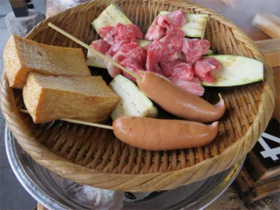 © photoAC 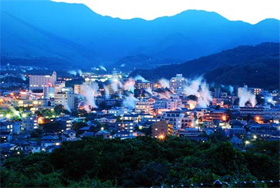 © Web Japan 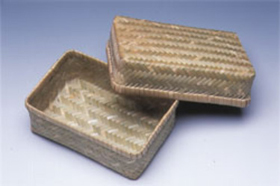 © Kids Web Japan 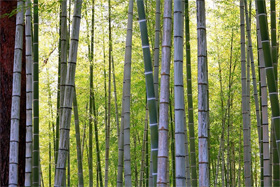 © Japan Up Close, Web Japan 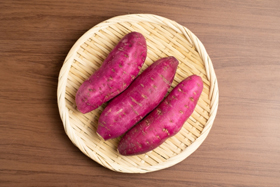 © photoAC |
|
However, learning to cut and skin bamboo strips is not the most difficult part of mastering bamboo crafts - the weaving process is. First, the bamboo strips have to be softened over a flame. To weave a bamboo basket, the artisan starts from the base, before moving on to the body. It takes a high level of skill to properly weave the base as it needs to be solid and flat. The basket is complete when the rim is woven. The rim can be finished as a continuation of the body (using just bamboo) or finished with wisteria. The completed can be then used as is, or coated and polished with lacquer for a glossy shine. These lacquered pieces have to be dried under the right conditions or the product may lose its shine.
Today, due to the increased accessibility of mass-produced products, demand for handmade bamboo crafts temporarily flagged during the middle of the last century. However, many have come to recognise the excellent craftsmanship and high quality of handmade bamboo products. Respect for bamboo artisans and demand for their work have increased, with many households happy to have kitchenware and home decorations made of bamboo in their home. It is clear to see how closely intertwined the history, culture, and economy of Beppu is with bamboo. If you are ever in Beppu, make sure to make some time out of hot spring-hopping schedule to learn more about the history of Beppu bamboo crafts! With an aray of beautiful bamboo crafts available, you will also be able to find the perfect souvenir to remind you of your memories of Beppu and Oita. | 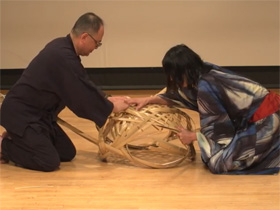 © Japan Society Talk 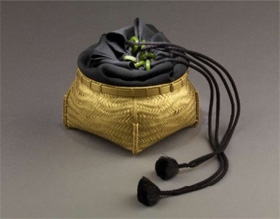 © British Museum collection |
Resources
|
Japan Brand - Authentic Japanese product -. n.d. Beppu Bamboo Ware. Retrieved 29 September 2021, from https://japan-brand.jnto.go.jp/crafts/woodcraft/3189/ |
|
Japan Creative Centre 4 Nassim Road, Singapore 258372 +65 6737 0434 / jcc@sn.mofa.go.jp https://www.sg.emb-japan.go.jp/JCC/ Nearest parking at Orchard Hotel & Delphi Orchard |
 |